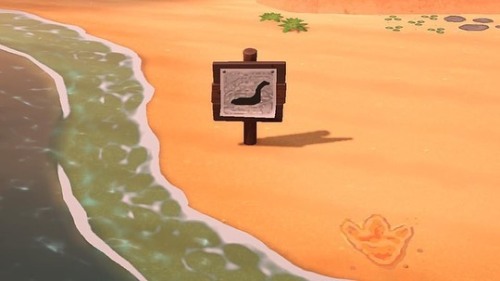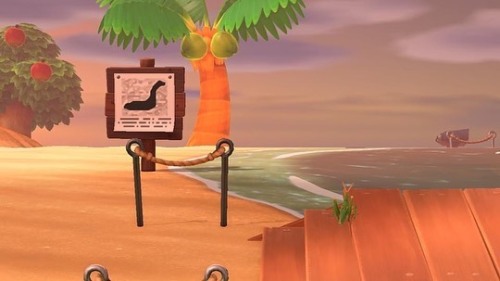Colourised Footage Of Benjamin, The Last Know Tasmanian Tiger (Thylacine).




Colourised footage of Benjamin, the last know Tasmanian Tiger (Thylacine).
Benjamin died on September 7th, 1936 in Hobart zoo. It is believed that he died out of neglect, as he was locked out of his shelter and was exposed to the searing hot sun and freezing cold night of Tasmania.
The Thylacine was one of the last large marsupials left on Australia (the other being the Kangaroo) after a great extinction event occurred around 40 thousand years ago. This extinction event, caused mainly by the arrival of humans, wiped out 90% of Australia’s terrestrial vertebrates, including the famous Megafauna.
The Thylacine was around 15-30kg (33-66lbs), were carnivorous, and had numerous similarities to other species like dogs, despite not being related and purely by chance, in a phenomenon known as convergent evolution (just like the ability to fly of bats and birds, despite following different evolutionary paths). Not only that, they could open their jaws up to 120 degrees, could hop around on two legs like a kangaroo, and both males and females had pouches.
Lastly in a cruel twist, the Tasmanian government decided to protect the Thylacine - just 59 days before the last one died, in a very notable case case of “Too little too late”. To date, many biologists believe that there are still Thylacine roaming the wild plains of Australia.
More Posts from Jackasslope and Others

The Last Thylacine: September 7, 1936
Hey everyone! This may be a little late depending on your time zone (as I’m in Los Angeles / PST, I’m behind practically everyone). Sorry about that!
Today, September 7th, 2019, marks the 83rd Anniversary of the death of the last known thylacine in the Hobart Zoo. This animal is pictured above.
There are a lot of myths and misconceptions surrounding the thylacine - and this individual in particular - so I thought I’d make a post to correct a few of these. Keep in mind that new facts and evidence do occasionally come to light, so this is of course subject to change!
MYTH #1: The last thylacine was named Benjamin.
FACT: The name “Benjamin” was allegedly given to the animal by a keeper named Frank Darby. Darby later claimed to have worked with this animal in an interview that took place in 1968. However, no record exists of Darby ever working at the Hobart Zoo, and the zoo curator’s daughter Alison Reid denied that Darby ever worked there.** [Source]
** Note: Although the nickname “Benjamin” was likely made up by Darby after the fact, it has stuck, so many thylacine enthusiasts (including me) still use it to refer to the last individual.
MYTH #2: The last thylacine was actually female.
FACT: Zoologist David Fleay, who took much of the film footage of this individual, stated in a newspaper article and diary entry that the animal was male, referring to it as a “fine male marsupial wolf.” Furthermore, in 2011, careful video analysis by Dr. Stephen Sleightholme (director of the ITSD) confirmed the presence of a scrotal sac, indicating that the last thylacine was indeed a male. [Source, Source]
MYTH #3: “Benjamin” was part of the Mullins family group.
FACT: The Mullins female was snared while her young were still in the pouch. This assertion would assume that “Benjamin” was one of the pups, grew up in captivity, and was the last surviving member of the family. However, in photos (including the one on this post), the snare mark is clearly visible on the animal’s hind leg, indicating that it was wild caught. It is more likely that “Benjamin” was snared by a man named Elias Churchill, though this is also debated. [Source]
MYTH #4: The carcass of “Benjamin” was immediately discarded after death because it was in poor condition.
FACT: The carcass was in fact sent to the Tasmanian Museum. What happened to it after that is unknown. [Source]

Name: Barghest, Barguest
Area of Origin: Northern England
Prevalent in Northern English folklore, the Barghest is a monstrous black dog, with fiery eyes, large teeth and claws, though the name has been known to refer to ghosts or household elves in other regions of the country. The word “Ghost” was pronounced “Guest” in Northern England, and the etymology of Barghest is thought to be the combination word, Burh-ghest or “Town-Ghost”. Similar to other mythical Black Dogs like the Black Shuck, Grim, Padfoot, Gwyllgi and Gytrash, the Barghest is believed to be an omen of death, foretelling the passing of an individual by laying on or near their doorstep. In some tales, the dog is but one form the entity can shapeshift into, with other appearances being that of a headless man or woman, a white cat or a rabbit. They are said to attack lone travelers in the countryside as well as the narrow alleys in those of the old English cities.

The Headline That Started It All
It all started in September of 1958 in a remote logging camp nestled near Bluff Creek, California where loggers were being terrorized by what they called “Bigfoot.” Each morning their camp would be covered in 16 inch tracks, and fruit was stolen from their worksites. The workers felt as if they were being watched at all times from within the forests. The strange occurrences even caused some of the workers to quit their jobs. The logging business in Bluff Creek started to slow due to a lack of workers.
Although the local police department ensured the workers and the townsfolk that it was all just an elaborate prank, the workers insisted that this was all too real. In fact some of the logging veterans had even said they’ve experienced strange activity in the forests for years. The activity in the area slowly escalated until Rey Kerr and Leslie Breazeale saw the creature responsible. In the early morning on their way to work the two loggers spotted a bipedal ape run out in front of their vehicle. They described it as an 8 foot tall creature with long arms, broad shoulders and covered in dark fur. After the creature disappeared into the forest they got out only to see the same sized footprints that had been seen all over the logging site.
On October 15, 1958 the Eureka Humbolt Standard released an article titled “Eyewitnesses See Bigfoot.” The article got a lot of attention and the creature known as Bigfoot gained a lot of popularity. The creature would claim worldwide fame 9 years later when Roger Patterson and Bob Gimlin would capture the legendary Bigfoot on film for the first time in the same area.


The story of the Wolf Woman of Mobile was first published in newspapers on April 8th, 1971. This Alabama monster was reported over 50 times in one week. Witnesses claim that the top half of the creature was that of a human woman, but the bottom half was that of a wolf. Many people described the creature as “pretty and hairy”. Some believe that this creature may have been a werewolf. However, after 10 days of sightings, calls stopped and the creature was never seen again.

Some of the things that Gef the Talking Mongoose had said were written word for word in James Irving’s personal diary. It is thought that Voirrey Irving was behind it all using ventriloquism.
“I am not evil. I could be if I wanted. You don’t know what damage or harm I could do if I were roused. I could kill you all, but I won’t.”
“I am a ghost in the form of a weasel, and I shall haunt you with weird noises and clanking chains.”
“Of course I know what I am, and you are not going to get to know, and you are only grizzled because I won’t tell you. I might let you see me some time, but thou wilt never get to know what I am.”
“I have three attractions. I follow Voirrey, Mam gives me food, and Jim answers my questions.”
“I’ll split the atom! I am the fifth dimension! I am the eighth wonder of the world!”
“If you are kind to me, I will bring you good luck. If you are not kind, I shall kill all your poultry. I can get them wherever you put them!”

A newly discovered photograph of a captive thylacine at Beaumaris Zoo c.1913, found in a private collection in the U.K. by thylacine enthusiast Alan Pringle.
The photo was one of three purchased at Salamanca Market in Hobart over 20 years ago. [x]
-
 eisit reblogged this · 1 week ago
eisit reblogged this · 1 week ago -
 bromple liked this · 1 month ago
bromple liked this · 1 month ago -
 wildernestt liked this · 3 months ago
wildernestt liked this · 3 months ago -
 zrterria liked this · 7 months ago
zrterria liked this · 7 months ago -
 animals-are-the-coolest-thing reblogged this · 7 months ago
animals-are-the-coolest-thing reblogged this · 7 months ago -
 wildernestt reblogged this · 8 months ago
wildernestt reblogged this · 8 months ago -
 headlesssamurai liked this · 11 months ago
headlesssamurai liked this · 11 months ago -
 mattciav liked this · 11 months ago
mattciav liked this · 11 months ago -
 motorsportsandchill liked this · 1 year ago
motorsportsandchill liked this · 1 year ago -
 ladygallifreym-blog reblogged this · 1 year ago
ladygallifreym-blog reblogged this · 1 year ago -
 ladygallifreym-blog liked this · 1 year ago
ladygallifreym-blog liked this · 1 year ago -
 c0g-3rg-5um reblogged this · 1 year ago
c0g-3rg-5um reblogged this · 1 year ago -
 c0g-3rg-5um liked this · 1 year ago
c0g-3rg-5um liked this · 1 year ago -
 wildernestt reblogged this · 1 year ago
wildernestt reblogged this · 1 year ago -
 noneadarkwolf reblogged this · 1 year ago
noneadarkwolf reblogged this · 1 year ago -
 gilliansboobs liked this · 1 year ago
gilliansboobs liked this · 1 year ago -
 uncxntrxllable reblogged this · 1 year ago
uncxntrxllable reblogged this · 1 year ago -
 nabstab liked this · 1 year ago
nabstab liked this · 1 year ago -
 blocodeespantamentos liked this · 1 year ago
blocodeespantamentos liked this · 1 year ago -
 benadrylcandlewhack liked this · 1 year ago
benadrylcandlewhack liked this · 1 year ago -
 mommy-mortis reblogged this · 1 year ago
mommy-mortis reblogged this · 1 year ago -
 johnbigballsbrown liked this · 1 year ago
johnbigballsbrown liked this · 1 year ago -
 louiveee reblogged this · 1 year ago
louiveee reblogged this · 1 year ago -
 redeadfish reblogged this · 1 year ago
redeadfish reblogged this · 1 year ago -
 demonic-chocolate reblogged this · 1 year ago
demonic-chocolate reblogged this · 1 year ago -
 demonic-chocolate liked this · 1 year ago
demonic-chocolate liked this · 1 year ago -
 pastalliofpasta liked this · 1 year ago
pastalliofpasta liked this · 1 year ago -
 imfandomtrashokay liked this · 1 year ago
imfandomtrashokay liked this · 1 year ago -
 tohakumaru liked this · 1 year ago
tohakumaru liked this · 1 year ago -
 waffletardis reblogged this · 1 year ago
waffletardis reblogged this · 1 year ago -
 waffletardis liked this · 1 year ago
waffletardis liked this · 1 year ago -
 alternianative reblogged this · 1 year ago
alternianative reblogged this · 1 year ago -
 barbaricjester reblogged this · 1 year ago
barbaricjester reblogged this · 1 year ago -
 tetranocular reblogged this · 1 year ago
tetranocular reblogged this · 1 year ago -
 tetranocular liked this · 1 year ago
tetranocular liked this · 1 year ago -
 huskywarian reblogged this · 1 year ago
huskywarian reblogged this · 1 year ago -
 prinf reblogged this · 1 year ago
prinf reblogged this · 1 year ago -
 generouskittendragon liked this · 1 year ago
generouskittendragon liked this · 1 year ago -
 prinf reblogged this · 1 year ago
prinf reblogged this · 1 year ago -
 jademaster666 liked this · 1 year ago
jademaster666 liked this · 1 year ago -
 fantasticearthanimals liked this · 1 year ago
fantasticearthanimals liked this · 1 year ago -
 gaminggremlin reblogged this · 1 year ago
gaminggremlin reblogged this · 1 year ago -
 skremer77 reblogged this · 1 year ago
skremer77 reblogged this · 1 year ago










